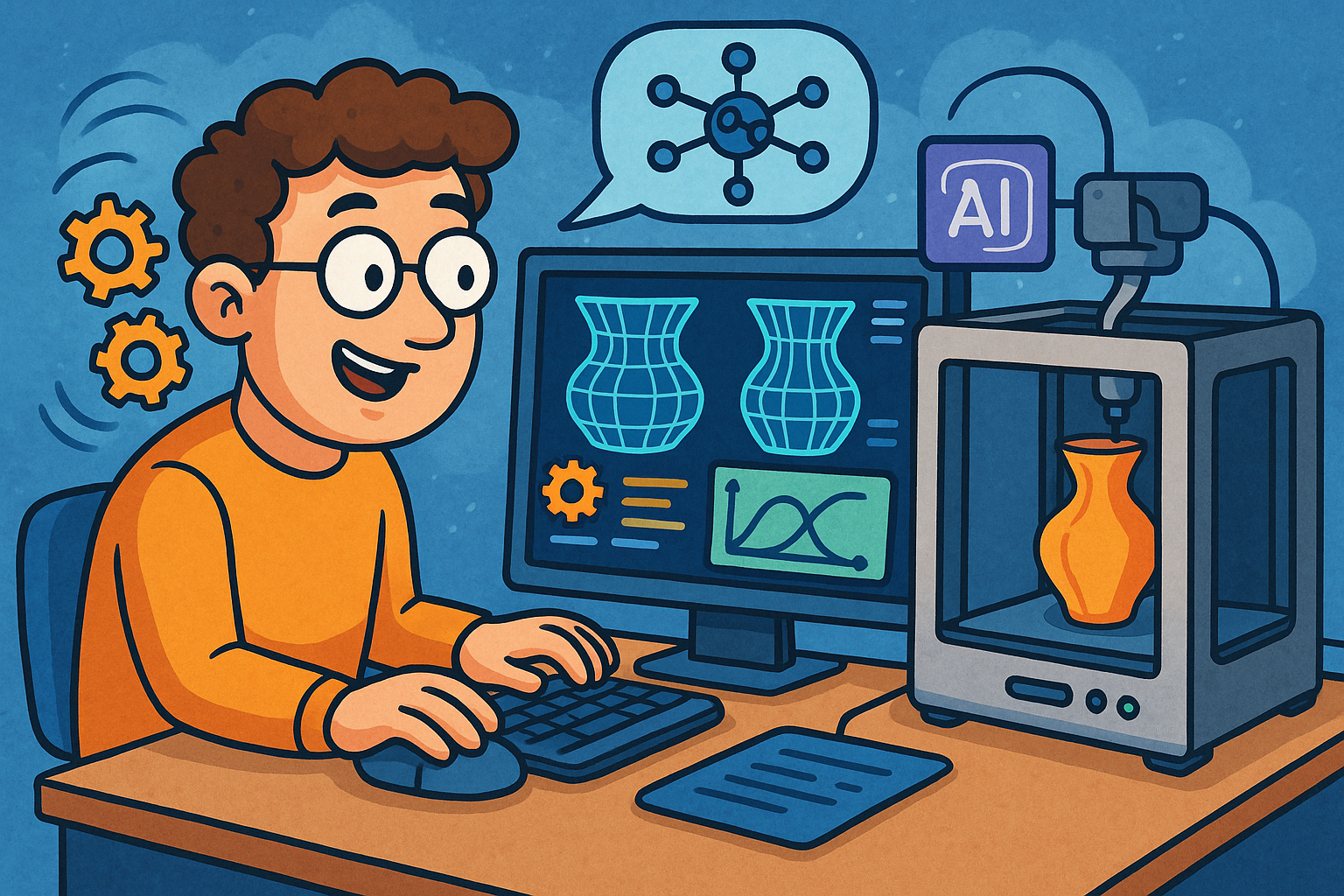Your Cart is Empty
Customer Testimonials
-
"Great customer service. The folks at Novedge were super helpful in navigating a somewhat complicated order including software upgrades and serial numbers in various stages of inactivity. They were friendly and helpful throughout the process.."
Ruben Ruckmark
"Quick & very helpful. We have been using Novedge for years and are very happy with their quick service when we need to make a purchase and excellent support resolving any issues."
Will Woodson
"Scott is the best. He reminds me about subscriptions dates, guides me in the correct direction for updates. He always responds promptly to me. He is literally the reason I continue to work with Novedge and will do so in the future."
Edward Mchugh
"Calvin Lok is “the man”. After my purchase of Sketchup 2021, he called me and provided step-by-step instructions to ease me through difficulties I was having with the setup of my new software."
Mike Borzage
Design Software History: Establishing MIT's CADLAB: A Pioneering Force in the Evolution of Computer-Aided Design and Its Lasting Impact on Modern Design Software Solutions
July 26, 2025 10 min read


Introduction and Context: Establishing MIT's CADLAB Legacy
MIT's CADLAB emerged during a period when the intersection of technology, engineering, and architecture was beginning to take on new meaning in the context of computational power and algorithmic research. Born out of an environment that demanded innovative solutions to complex design challenges, MIT's CADLAB was established as a dedicated research center where academic minds could convene with industry experts. The early days of design software were characterized by rudimentary modeling tools and an incomplete understanding of how computers could be harnessed to streamline the design process. This evolving landscape was driven by the need to solve intricate geometrical problems, and the academic community at MIT recognized that the fusion of engineering principles and computer science could yield transformative outcomes in the fields of architectural design and engineering computation. During this inception phase, researchers at MIT began exploring algorithms that had the potential to revolutionize the design process by automating aspects of visualization, simulation, and data structuring. As a result, CADLAB rapidly became a hub for pioneering research that not only focused on the technical intricacies of computational geometry but also on the creation of comprehensive frameworks that would eventually influence the conceptual development of what we now term computer-aided design systems.
Establishing a New Paradigm in Design Software
In the broader context of the mid-20th century, the advent of digital computing began to create a fertile ground for academic-industry collaborations. MIT's CADLAB capitalized on this emerging synergy by bringing together academic researchers, visionary engineers, and innovative architects who were motivated by a shared vision of transforming design processes through computational means. These collaborators worked on fundamental problems such as data structure optimization, algorithmic efficiency, and real-time simulation — all of which laid the groundwork for the modern theoretical and practical aspects of design software. The environment at CADLAB was characterized by an intensive exchange of ideas, where technological experimentation was as crucial as theoretical analysis. This approach not only pushed the boundaries of what was technologically possible but also provided engineers with novel tools that fundamentally changed their approach to problem-solving. Researchers and educators in this space developed early concepts that highlighted the need for flexibility and dynamic interactivity in design software, ensuring that emerging models could be adapted to the evolving needs of industries ranging from aerospace to civil construction.
The Intersection of Academic Rigor and Industrial Demand
The historical backdrop of CADLAB’s establishment is notably intertwined with the transformative shifts occurring in both academia and industry during the 1960s and 1970s. This period was marked by significant investments in research from government bodies and private enterprises that recognized the potential of computational systems to enhance design efficiency. As technological advancements began to stir up revolutionary ideas in computer science, the traditional boundaries between theoretical research and hands-on industrial applications started to blur. MIT’s CADLAB, with its robust academic foundation, brought a level of rigor that ensured the work being done was not only innovative but also deeply analytical and methodologically sound. This melding of academic insight with industry exigencies led to a symbiotic partnership that allowed CADLAB to spearhead research into areas such as area subdivision techniques, surface generation, and the refinement of computational rendering techniques. The institutional commitment to fostering innovation, combined with the readiness of industry partners to adopt and invest in research outcomes, created a legacy that significantly influenced the subsequent evolution of design tools and methodologies across the global technological landscape.
Innovations and Breakthroughs at CADLAB
The breakthroughs at MIT's CADLAB represented some of the most important technological and methodological advancements in the early days of computer-aided design. A primary focus revolved around the development of early algorithms and data structures that were crucial for managing complex geometrical data on limited computing resources. Researchers at CADLAB explored innovative ways to integrate computational geometry with practical design processes, resulting in novel computational models that transformed the conceptual framework of design software. Pioneers in the field devised innovative approaches to modeling and simulation that provided a bridge between abstract mathematical concepts and their concrete implementation in design workflows. By experimenting with modular design principles and incorporating advanced data management techniques, CADLAB laid a strong foundation for future developments in solid and geometric modeling. The integration of these methods set a high benchmark for subsequent research initiatives, influencing how both academic and industrial entities conceptualized efficient design systems.
Advancements in Algorithms and Data Structures
One of the defining features of CADLAB’s research was its focus on developing advanced algorithms that could handle the intricate requirements of design computation. The team at CADLAB was one of the first to explore the possibility of harnessing recursive algorithms and data partitioning strategies to improve the speed and efficiency of computer-aided design processes. These early algorithms formed the core of what would eventually evolve into robust software systems capable of performing complex adjustments in real-time. Researchers innovated with data structures that allowed for dynamic modifications, establishing the groundwork for the flexible systems seen today. With their rigorous exploration, they laid the foundation for integrating stable computational models with a design-centric workflow, thereby aligning academic theory with practical implementation. Key breakthroughs were achieved through the use of algorithmic techniques that allowed CADLAB to handle non-linear transformations and spatial partitioning, two aspects that are critical in modern design applications. Researchers in the lab urged continued advancement through academic publications, conferences, and collaborative projects which proliferated the knowledge widely throughout the engineering and design community.
Integration of Computational Geometry with Design Processes
Another seminal contribution from MIT's CADLAB was the integration of computational geometry into everyday design practices. The lab's endeavors in blending advanced geometric constructs with intuitive design principles provided a blueprint for modern modeling practices. By incorporating computational geometry, researchers pioneered methods that enhanced the fidelity of digital models, enabling more accurate renderings of complex surfaces and intricate structures. As the research progressed, the development of these models paved the way for intricate representation systems that are recognized today as the precursors to modern 3D modeling techniques. The breakthrough came as a result of blending discrete mathematics with cutting-edge computing hardware, enabling the support of increasingly sophisticated design algorithms. This integration of theoretical constructs with computational execution not only elevated the design standards but also introduced new paradigms for analyzing spatial relationships. The approach provided clear advantages, such as the ability to seamlessly transition from conceptual sketches to refined digital blueprints. CADLAB’s innovations in this domain are visible through the integration of computational geometry approaches that ultimately influenced how algorithms are designed to handle efficiency and precision across multiple dimensions.
Notable Figures and Industry-Defining Projects
The research team at MIT's CADLAB was an eclectic mix of trailblazing academics and passionate innovators whose contributions extended well beyond the confines of the laboratory. Key figures, many of whom later became leading names in the design and engineering sectors, played pivotal roles in setting new industry standards. These individuals not only pushed the boundaries of computational design but also redefined the collaboration between technical research and practical industrial applications. Their work on early prototypes helped create a bridge between advanced algorithmic research and practical design implementations. Among the many projects undertaken were innovations in prototype development that anticipated the modern cycle of iterative design, allowing for rapid prototyping and simulation. By establishing a robust feedback loop between computational theory and experimental design, these pioneers ensured that the breakthroughs achieved at CADLAB would serve as a critical stepping stone towards the sophisticated modeling systems found in contemporary design suites. The legacy of these projects continues, as modern CAD environments still echo the initial aspirations and technical innovations of the lab.
Influence on Modern Design Tools
The legacy of MIT's CADLAB extends far beyond its historical period, influencing modern design tools in profound ways. The pioneering work done at the lab served as a catalyst for technological advancements in solid and geometric modeling systems that form the backbone of today’s contemporary CAD applications. Over the decades, the principles established in the early days of CADLAB have evolved and been integrated into advanced functionalities such as interactive user interfaces, real-time rendering, and simulation capabilities that are now commonplace in high-end design software. Innovations in computational geometry and modeling workflows developed at MIT's CADLAB have informed the evolution of digital design principles. Today’s powerful software platforms owe much to the rigorous experimental validations and subsequent industrial adoptions that originated in that fertile academic environment. As industries from civil engineering to aerospace continue to demand higher precision and more dynamic capabilities, designers consistently refer back to the original design philosophies born out of CADLAB. This continuity of thought ensures that the cross-disciplinary legacy — linking engineering, architecture, and additive manufacturing — remains central to ongoing developments in the design domain.
Evolving into Modern Solid and Geometric Modeling Systems
The breakthroughs at CADLAB revealed early insights into the potential of solid and geometric modeling, impacting modern design applications significantly. The transformation of these early models into the robust systems we have today was not a linear progression, but an evolution that incorporated incremental advances from various academic and industrial sources. As digital technology progressed, CADLAB’s work laid the foundation for systems capable of processing large loads of data and rendering intricate designs with a high degree of accuracy. These models, originally conceptualized with limited computational resources, underwent refinement as the capabilities of hardware and software increased. The pioneering methods developed in CADLAB contributed directly to the transition from primitive drafting techniques to sophisticated, algorithmically driven modeling environments. Key techniques, such as spatial decomposition and parametric modeling, have their origins in experiments conducted at the lab. Modern CAD software now offers a range of capabilities — from complex surface modeling to integrated simulation environments — that can be traced back to the fundamental breakthroughs achieved during the formative years of CADLAB. The advancements have been maintained through iterative improvements, which include adopting the latest hardware innovations and refining the underlying mathematical constructs.
Influence on User Interfaces and Simulation Capabilities
Another area in which CADLAB’s influence remains unmistakable is the evolution of user interfaces and simulation capabilities in modern design software. The early work at CADLAB set a precedent for interactive design environments, where users could iterate on designs quickly, inspect simulations, and manipulate design elements in a dynamic fashion. The lab’s approach focused not only on computational accuracy but also on creating systems that were intuitive enough to reduce the learning curve for engineers and architects alike. By building prototypes that allowed for interactive adjustments in real-time, CADLAB influenced the design of applications that now feature sophisticated graphical user interfaces and simulation modules. These developments permitted real-time visualization of design iterations, fostering a more collaborative and iterative creative process. The legacy of CADLAB’s design thinking is particularly evident in modern interface design, where simplicity, responsiveness, and user engagement take center stage. Designers today benefit from a suite of tools that allow them to visualize stress tests, movement dynamics, and complex rendering tasks, all without stepping outside a centralized digital environment. The evolution and integration of these user-centered methodologies remain a direct testament to the lab’s enduring impact on the way design professionals interact with digital models.
Bridging Disciplines: From Engineering to Additive Manufacturing
The influence of CADLAB is notably felt in its ability to bridge multiple disciplines, enhancing the capabilities of modern design tools across a variety of industries. The early principles of computational geometry and integrated design methodologies have transcended traditional boundaries, contributing to the development of additive manufacturing, architectural design, and advanced engineering computation. In a world where design software must now cater to an array of specialized requirements, the multidisciplinary approach introduced by CADLAB continues to inform the development practices of modern software companies. The innovations originating from this lab have become part of the bedrock for contemporary tools that offer extensive simulation and prototyping features. Designers and engineers now rely on comprehensive suites that provide both the precision of geometric modeling and the flexibility required for rapid prototyping and simulation. The blueprints for these innovations lie in the foundational research conducted at MIT's CADLAB, where projects continually experimented with bridging the gap between theoretical models and practical applications. By fostering a culture of cross-disciplinary collaboration, the lab ensured that its research was both resilient and adaptable, qualities that remain essential in today’s technological landscape.
Conclusion: The Enduring Legacy of MIT's CADLAB
The evolution of design software owes a great debt to the pioneering work carried out at MIT's CADLAB during an era when the confluence of computing power and theoretical research began to radically reshape the landscape of engineering and design. The lab’s transformational breakthroughs — from the development of early algorithms and data structures to the integration of computational geometry within design processes — revolutionized how designers approached complex spatial challenges. Today’s advanced CAD systems, with their powerful simulation capabilities, sophisticated user interfaces, and integrated modeling environments, all trace their conceptual heritage back to the innovative experiments and relentless research of this early academic institution. The significant cross-disciplinary impact of CADLAB, spanning engineering computation, architectural design, and additive manufacturing, has set the stage for ongoing technological advancements. This lasting legacy underscores the importance of fostering robust academic research programs that can seamlessly translate theoretical breakthroughs into practical, industry-defining technologies.
Recapitulation of CADLAB's Pivotal Contributions
In recapitulating the monumental contributions of MIT's CADLAB, it is evident that the fusion of academic pursuit with industrial needs created a fertile environment for breakthrough innovations. Researchers at CADLAB pushed the envelope of computer-aided design by addressing fundamental challenges with creative and practical solutions. They developed algorithms that improved computational efficiency, built data structures with a focus on dynamic adaptability, and seamlessly integrated advanced geometric principles into the design process. This blend of rigorous research and practical prototyping not only advanced the state-of-the-art in design technology during that era but continued to offer a powerful foundation for the sophisticated design tools available today. The work carried out at the lab provided the blueprint for bridging complex mathematical models with everyday design challenges — a legacy that still resonates in the modern engineering and architectural sectors. With its methodical approach and relentless pursuit of innovation, CADLAB set a precedent for academic research that is deeply intertwined with continuous industrial progress.
Final Reflections on the Role of Academic Research in Design Innovation
The profound impact of MIT's CADLAB on modern design software exemplifies the transformative potential of academic research when it challenges traditional practices and offers new possibilities. This institution’s dedicated approach to exploring and refining the underlying mathematical and computational models heralded the advent of what we now consider modern computer-aided design practices. Its pioneering research has not only influenced the mechanisms of digital modeling and simulation but has also inspired a broader shift toward integrating diverse disciplines. Engineers, architects, and designers continue to leverage the insights derived from CADLAB’s work in developing products that are more efficient, accurate, and visually compelling. The ongoing success of contemporary design software is a testament to the interdisciplinary and forward-thinking strategies first introduced at MIT’s CADLAB. As technology continues to advance at an unprecedented pace, the lessons from CADLAB underscore the need for continuous investment in academic research that fuels innovation. Ultimately, the legacy of CADLAB reinforces the notion that groundbreaking research is not confined to theoretical realms but is a powerful driver of practical technological advancements that shape the future landscape of design.
Also in Design News

Advanced 3D Printing Software: Revolutionizing Additive Manufacturing with AI and Simulation Tools
July 26, 2025 9 min read
Read More
Bluebeam Tip: Enhance Team Collaboration with a Shared Parameter Library in Bluebeam Revu
July 26, 2025 1 min read
Read More
Rhino 3D Tip: Techniques for Achieving Realistic Materials in Rhino 3D Modeling
July 26, 2025 2 min read
Read MoreSubscribe
Sign up to get the latest on sales, new releases and more …


